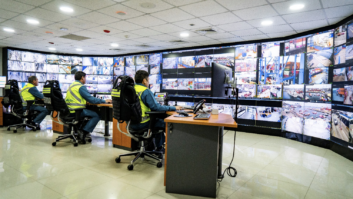
In recent years, technology has been viewed by many businesses as a tool capable of solving everything. This is not the case. As organisations and their IT teams mature in their understanding of different solutions, they are beginning to move away from the tradition of throwing tech at every problem. Instead, we will start to see companies increasingly consider how their people actually work and what tools can help them to perform their roles better.
In everyday life, consumers are now exposed to a wide array of tools, making them increasingly aware of the different options available to them. So, if they want an instant messaging service or video conferencing tool, the likelihood is that they have a preferred tool that they already use outside of work. The alleged lines between enterprise and consumer IT are subsequently blurring, and businesses savvy to this shift will increasingly empower employees to use the tools that are right for them to get the job done.
Employee-first technology adoption
The transition towards employee-first IT is becoming apparent in organisations of every size and means. But it is certainly the case that larger businesses are less naturally configured to adopt new tools based on the latest employee needs. There are budgets to reconcile and long-standing processes to respect, but that doesn’t mean it’s an insurmountable task to make smaller changes incrementally to see great results.
Smaller businesses tend to be more agile and flexible with their adoption of new technology. Staff are empowered to suggest investments that have demonstrable benefits and the organisations are agile enough to decide upon and implement new tech with reasonable brevity.
The best-case scenario of course is to find a happy medium, whereby there’s fresh thinking and a curious approach to new workplace technologies, in a way that allows IT teams to ensure everything remains secure at all times. These two often competing directives can actually drive a really healthy, evolving IT portfolio which everyone in the business is onboard with and fully utilises. As a result, we will see more businesses striving to find this balance in 2020.
Re-envisaging the role of IT
For a long time, IT teams have been focusing on keeping the lights on and using tech as an easy tool to solve most issues. We now need to take a step back from here. In 2020, IT needs to have a seat at the table in senior management meetings and the ability to play a core role in influencing big decisions and forward-looking strategies.
The reality is that IT is still seen as a cost centre for many businesses. But, when implemented strategically, it can drive huge organisational efficiencies and support wider business transformation. If business leaders don’t have that in-depth understanding of IT, they must rely upon strong, strategic IT leaders to ensure the technology stack aligns with the business ambition to succeed.
Empowering digital leaders
In 2020, businesses must do more empower their digital leaders to be able to thrive. Be they IT department leads, CTOs or CDOs, technical leaders will have a clearer understanding of the need to innovate from within and the importance of using the right tools for the job. This often comes down to trust, particularly for SMEs, and best practice organisations have already realised this and reap the rewards accordingly. So, in 2020, we will see more follow suit, as leaders realise the importance of trusting others to make bold decisions around IT investments.







